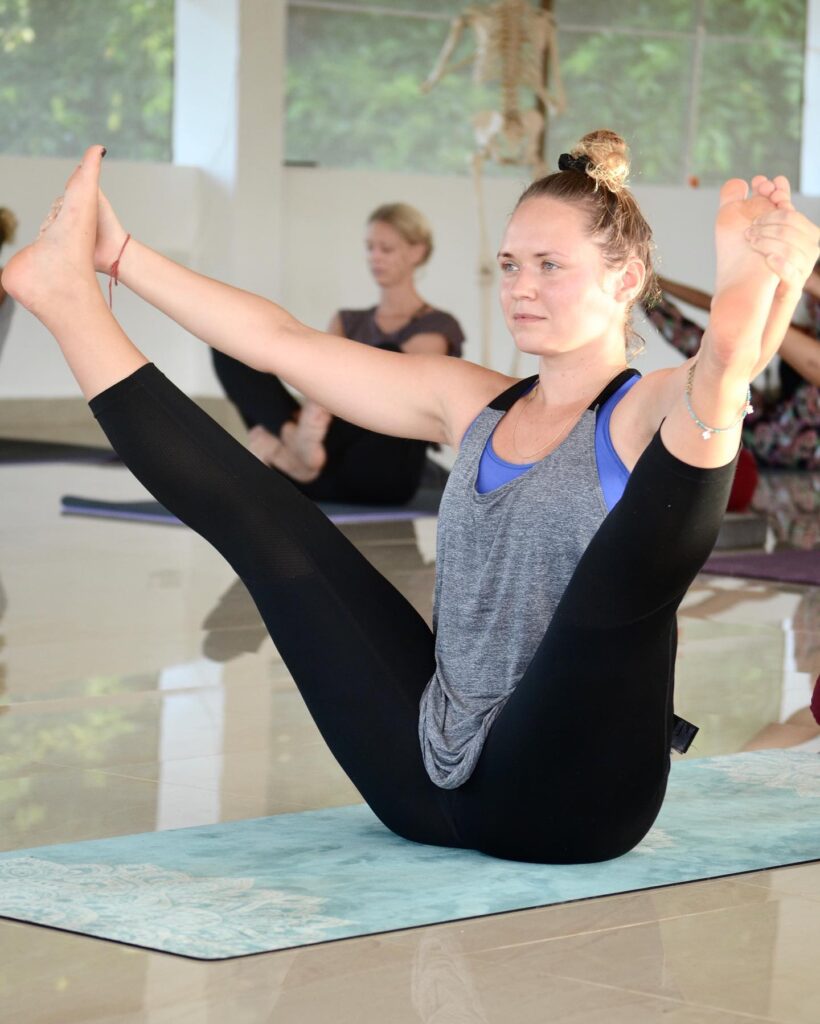How to Get More Oxygen to the Brain

You must have heard a relative or a friend whine about feelings of exhaustion or worrying about loss of productivity at work. Also, sometimes you yourself must have experienced this ‘brain fog’ where you found it difficult to understand or complete a specific task. Such symptoms of lack of mental clarity, difficulty concentrating, fatigue and depression may be caused due to low circulating oxygen to the brain.
You might be surprised to know that the brain takes up almost 25% of the entire amount of oxygen that is available to the human body. In fact, our brains utilize about three times more oxygen than any other muscle in the body. Moreover, brain cells are quite sensitive to even minuscule decreases in oxygen levels and cannot function optimally and for prolonged periods due to lack of oxygen.
The Pandemic made the pulse oximeter a widely used device. This small, portable device gives us an idea about our fifth vital sign, i.e it tells how well our blood cells are saturated with oxygen. Nevertheless, most of us are now well aware of the fact that the levels of circulating oxygen in our body and especially our brain are a critical aspect of our overall body function.
Taking note of the above discussion, the ensuing sections of this post will enlist ways to increase oxygen to the brain naturally.

Symptoms and conditions due to low oxygen levels in the brain
As discussed earlier in the post, your brain utilizes about 20% of the supply of blood oxygen offered by each heartbeat. An unhindered blood flow towards the brain not only brings oxygen but also other nutrients besides carrying waste products such as carbon dioxide, lactic acid and other wastes from the brain.
However, when this blood flow is hindered, it gives rise to cognitive problems linked to several neurological and mental conditions including:
- Brain Fog
- Anxiety
- Depression
- Dementia
- Parkinson’s disease
- Panic disorder
- Obsessive Compulsive Disorder
There are several other causes that lead to poor blood flow to the brain like low thyroid, abnormal blood pressure, certain infections and even stress.
So, typically speaking, addressing these causal factors can also prove beneficial for promoting oxygen to the brain naturally.
How to increase oxygen to the brain naturally?
The health and balance of the brain can be achieved by incorporating certain lifestyle changes enlisted below. Let’s take a look.
Get some physical exercise
Memory loss and reduced cognitive functions are typical of an ageing brain. In fact, physical exercise is recommended for people who have a greater risk of developing Alzheimer’s disease. Physical exercise promotes blood circulation which in turn leads to greater oxygen-rich blood circulating in the brain. Doctors, however, suggest a daily routine of walking as a means of increasing the oxygen levels in the brain naturally. Walking is the most natural and simple exercise which allows for enhanced blood pumping sans any kind of exhaustion mostly attributed to more rigorous forms of workouts that subtract substantial amounts of oxygen from reaching the brain.

Do yoga asanas
Yoga is a gentle yet effective form of exercise that not only nourishes your body but also heals your mind and soul. Besides, yoga is such a vast and versatile domain that it caters to even the most specific health needs and concerns. In fact, yoga performed during the early morning hours promotes blood circulation in the entire body while keeping you energized and proactive throughout the day. Yoga recommends certain asanas that not only help increase oxygen to the brain naturally but also help in stretching and flexing specific body muscles. For instance, Balasana or the child pose when performed increases blood flow to the head and chest area. This pose entails a gentle stretch to your hips, back, ankles and thighs while keeping you energized for the day.
Similarly, Sarvangasana, a kind of shoulder stand is another effective yoga pose that improves blood circulation to the head, chest, abdomen and the entire pelvic region.
Viparitkarni or legs up the wall asana is another yoga pose that not only enhances blood circulation in the brain but also stretches the neck, torso and legs. Likewise, Hastapadasana or forward bending asana not only leads to enhanced blood circulation towards your brain but also gives a good stretch to your back muscles while keeping your spine supple.
Padmasana is yet another yoga pose that entails greater awareness of your body and breathing. It enhances concentration and memory as your brain is activated and your mind is attentive.
You can learn these yoga poses and many other aspects of yoga by enrolling in yoga schools in Rishikesh, India. Alternatively, if you cannot travel to India, then there are also several online learning options such as 200 Hours Yoga Teacher Training Course in Rishikesh that are equally effective.

Practice Pranayama
Follow simple breathing exercises like deep belly breathing or pursed-lip breathing to open your airways and help improve oxygen levels in your body. However, if you want to learn methodical and time-tested breathing techniques, then we suggest you learn pranayama.
Yoga as a discipline also inculcates many breathing exercises that through methodical pauses and training of the respiratory system can oxygenate the brain and keep it functionally optimally. In yoga, pranayama is also looked at as a means to detoxify and purify the body. Pranayama techniques entail channelizing the vital energy of the body aka the ‘Prana’ to heal the body of any disorders and bring it to a state of balance. Besides, pranayama calms an agitated mind, gives mental clarity and prepares the mind and body for meditation.
There are many courses like the Breath Detox yoga and pranayama course online conducted by renowned yoga schools where you will learn traditional Pranayama methods along with a detailed explanation of the benefits and contradictions of each technique. At the end of such programs, as a practitioner, you will develop breath capacity improvement that will help you breathe more correctly and efficiently therein increasing oxygen to your brain naturally.
Learn Meditation
Meditation, an intrinsic part of a yoga routine is a deeply relaxing technique. Mediation helps calm the mind and improves memory and focus. However, not many of you know but studies have shown that meditation also significantly improves blood flow towards the brain. In one study, 14 people having memory issues practiced meditation over a period of 8 weeks. At the end of the program, researchers found increased amounts of blood circulation in the prefrontal cortex region of the brain. Moreover, verbal fluency and logical memory also showed improvements after training.

However, most people consider meditation to be an arduous practice which is difficult to imbibe into a daily routine. However, today, technology has made it easier to adopt a mindfulness activity into your routine life. There are several health and fitness apps that you can install on your smartphone and follow the simple meditation techniques in your own time and space. But, if you are keen to learn more traditional and authentic meditation methods at a deeper level, we suggest you enroll in the 200 Hours Yoga Teacher Training Course Rishikesh or learn meditation by visiting a yoga school in Rishikesh.
Keep yourself hydrated
It’s worthwhile to note that the human body is made up of 60% of water. So, water plays a critical role in many of the body functions such as regulating body temperatures, lubricating our joints and increasing blood flow to the brain, which eventually offers enhanced oxygenation. This further helps to calm the brain and helps the body unwind at the end of the day. Also, water just like other parts of the body also enables the brain to flush out toxins from the body. Furthermore, being dehydrated is shown to affect our moods. The temperature of the brain elevates preventing it from flushing out dead cells and toxins. These dead cells then cause chemical imbalances in the brain and affect our moods. So, folks stay hydrated for staying in a buoyant good mood.
Furthermore, if you don’t drink enough water, your brain finds it difficult to remember things and draw conclusions. Moreover, creating and preserving short-term memories also becomes a challenge. So, the next time you are forgetful, just make sure that you are consuming enough water throughout the day.
However, make sure you drink filtered water as it is more oxygenated compared to tap water.
Get adequate diet
Poor nutrition can play havoc with brain function. The brain, just like any other organ in the body requires a range of nutrients, proteins and vitamins for its oxygenation. This in turn helps improve memory, comprehension ability and motivation. There are certain foods which are rich in antioxidants and nutrients that serve as catalyzers of increased blood flow. This in turn supports the optimal neuronal activity. Foods such as those rich in iron, B vitamins, Omega 3 fatty acids and antioxidants should be consumed. Food groups such as nuts and seeds, whole grains, legumes, green leafy vegetables, berries, avocado and eggplant should be consumed in a balanced way to improve brain function.

Antioxidants in particular allow the body to utilize oxygen more optimally thereby enhancing oxygen uptake during digestion. Hence, foods such as strawberries, cranberries, blueberries, plums, and red kidney beans should be consumed. Also, fatty acids like vitamin F play a critical role to increase blood hemoglobin or blood oxygen levels. Foods such as soybeans, flaxseeds and walnuts are rich in such acids.
So, be mindful of what you are putting on your plate as it will directly affect the way your brain will function eventually.
Expose yourself to sunlight
Research suggests that exposing yourself to light helps stimulate circulation and blood flow to the brain. Studies that included light therapy showed that subjects who received just a few days of light therapy showed greater activity in the cerebral cortex or the executive part of the brain. The cerebral cortex displayed increased blood flow and greater activity due to light exposure. Also, studies have shown that vitamin D levels play a role in brain blood flow.
So, expose yourself to sunlight at least for 20 minutes each day to boost the circulation of blood to your brain. Also, consider supplementing with vitamin D especially during the winter months when the sunlight is not adequate. This will not only shield you from depressive conditions like SAD (seasonal affective disorder) but also promote a good mood due to enhanced brain blood flow.
Reduce caffeine intake
Although coffee is generally considered good for brain health and protects against dementia, however, it should be avoided if you are looking to increase oxygen to the brain naturally. Studies have shown that caffeine reduces brain blood flow by 20% to 30% subject to dosing and frequency of intake. Now, if you are looking to quit drinking coffee, then the herb Rhodiola can come to your rescue can it will help you tide over withdrawal symptoms. Also, you can consider supplementing with whole coffee fruit instead of consuming coffee. In fact, the coffee fruit is said to contain many healthy nutrients which normally you would not find in coffee. Moreover, ingesting the coffee fruit concentrate helps enhance brain function.
Get proper sleep
Sleep is not only healing and restorative but can also help increase blood flow to the brain naturally leading to enhanced oxygenation. As per a study, blood flow to the brain increased significantly during the REM phase of sleep with the rise being as great as 80% as per the study. So, try to get at least 7 to 8 hours of uninterrupted sleep each night if you are looking to increase oxygen to the brain naturally. If you suffer from sleep problems like sleep apnea or insomnia, we suggest you consult a doctor.

However, small tips such as sleeping in a dark room, maintaining a sleep hygiene routine, switching off gadgets close to bedtime, meditating and even listening to soothing music can make you sleep better.
Your takeaway!
The tips mentioned in this post are simple and easy to follow. However, if you are looking to learn some of these interventions like yoga, meditation or pranayama, we suggest you enroll in a yoga school in Rishikesh and transform your health and well-being.



